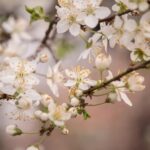Japanese yew landscaping ideas have gained popularity for their versatility and timeless appeal. Whether used as a privacy hedge, focal point, or part of a stunning landscape design, Japanese yew is a favorite among gardeners and landscapers. In this article, we will explore the various ways to incorporate Japanese yew into your landscape and provide tips for its care and maintenance.
Japanese yew, scientifically known as Taxus cuspidata, is a versatile evergreen shrub that can thrive in a variety of conditions. Understanding its unique sun and soil needs is crucial in choosing the right location for planting. We will discuss how to assess these needs and ensure the optimal growth of Japanese yew in your landscape.
One of the most popular uses of Japanese yew is creating privacy hedges. We will provide tips and tricks for planting and maintaining these hedges to achieve the desired level of seclusion in your outdoor space.
Additionally, we will delve into how pruning techniques can be used to highlight the unique shape and structure of Japanese yew, making it a striking focal point in your landscape design. Stay tuned as we explore companion planting options and incorporating Japanese yew into different garden styles.
Choosing the Right Location
Sunlight Requirements
Japanese Yew is a versatile landscaping plant that can thrive in both full sun and partial shade. When choosing the right location for your Japanese Yew, it’s important to consider its sunlight needs. For optimal growth and health, Japanese Yew prefers at least 4-6 hours of direct sunlight per day. However, it can also tolerate shade, making it a suitable option for different areas of your garden.
Soil Conditions
In addition to sunlight, the soil conditions play a vital role in the successful growth of Japanese Yew. This plant prefers well-drained soil that is rich in organic matter. It can tolerate different soil types, including clay, loamy, or sandy soil as long as it is well-drained. Before planting Japanese Yew, it’s recommended to amend the soil with organic matter to improve its fertility and drainage.
Tips for Choosing the Right Location
When selecting a location for planting Japanese Yew in your landscape, consider areas with good air circulation to prevent common fungal diseases. Additionally, avoid planting Japanese Yew in low-lying areas where water tends to accumulate after rain. By understanding the sunlight and soil needs of Japanese Yew, you can create an optimal environment for this versatile landscaping plant to thrive and enhance the beauty of your outdoor space.
Creating Privacy With Japanese Yew Hedges
Japanese Yew is a popular choice for creating privacy in outdoor spaces, as it grows quickly and densely, forming a thick hedge that can effectively block out unwanted views or nosy neighbors. Here are some tips and tricks for planting and maintaining Japanese Yew hedges in your landscape:
- Choose the right location: Japanese Yew thrives in well-drained soil and partial shade to full sun. When selecting a location for your hedge, make sure it will receive the appropriate amount of sunlight and ensure that the soil is not waterlogged.
- Planting and spacing: When planting Japanese Yew hedges, allow enough space between each plant to accommodate their mature size. Typically, they should be spaced about 4-6 feet apart to form a solid hedge over time.
- Maintenance: Regular pruning is essential to maintain the desired shape and density of the hedge. Trim new growth throughout the growing season to encourage a bushy, full appearance. Additionally, prune the top narrower than the bottom to allow sunlight to reach all parts of the hedge.
When planning your Japanese Yew landscaping ideas for privacy hedges, keep in mind that these plants are toxic when ingested, so it’s important to place them in areas where children and pets cannot access them. Despite this consideration, with careful planning and regular maintenance, Japanese Yew hedges can provide both privacy and beauty to any landscape.
Japanese Yew as a Focal Point
Japanese yew is a versatile plant that can be used in various ways to enhance the beauty of your landscape. One popular way to showcase its unique shape and structure is by using pruning techniques. Properly pruned Japanese yew can become a focal point in your garden, adding interest and creating a visually stunning display. Here are some tips for using pruning techniques to highlight the beauty of Japanese yew:
- Start by identifying the natural shape of the Japanese yew and envision how you want it to look when pruned. Consider the overall design of your landscape and how the plant will fit into the existing layout.
- Use hand pruners or shears to carefully trim the outer branches, focusing on removing any dead or damaged growth. This will help improve the overall appearance and health of the plant.
- For a more formal look, consider shaping the Japanese yew into geometric forms such as cones, spirals, or columns. Regular trimming and shaping will help maintain these distinctive shapes over time.
By utilizing pruning techniques, you can transform Japanese yew into a visually striking focal point that adds interest and character to your landscape. Whether you prefer a more natural form or a sculpted design, proper pruning will help highlight the unique shape and structure of this versatile plant.
Additionally, consider incorporating lighting around your pruned Japanese yew to further accentuate its beauty, especially in the evening hours. Well-placed outdoor lighting can create dramatic effects and emphasize the intricate details of your carefully pruned Japanese yew.
Companion Planting
Choosing the Right Companions
When it comes to pairing Japanese yew with other plants in your landscape design, it’s important to consider plants that will complement its dark green foliage and compact, upright growth habit. Look for plants that will provide contrast in color, texture, and form to create a visually appealing combination.
Some popular options for companion planting with Japanese yew include boxwoods, variegated hostas, colorful heucheras, and flowering shrubs like hydrangeas or azaleas. These plants not only create visual interest but also thrive in similar growing conditions as the Japanese yew.
Creating Visual Interest
Incorporating different heights and shapes into your companion planting can add depth and dimension to your landscape design. Consider adding lower-growing perennials or groundcovers around the base of the Japanese yew to soften its edges and create a seamless transition between the yew and the surrounding garden. Taller flowering shrubs or ornamental grasses can be strategically placed behind or alongside the Japanese yew to enhance its presence without overshadowing it.
Maintaining Harmony in the Landscape
To ensure a cohesive and harmonious look in your landscape design, it’s important to consider factors such as color scheme, bloom time, and overall maintenance needs when choosing companion plants for the Japanese yew. By selecting plants that share similar care requirements and seasonal interest, you can create a stunning landscape that evolves throughout the year. Additionally, incorporating a variety of plant textures and forms will add visual appeal while maintaining balance within the overall design.
By carefully selecting companion plants that complement the unique characteristics of the Japanese yew, you can create a striking landscape design that is both visually captivating and harmonious. Whether you prefer a formal garden setting or a more naturalistic approach, pairing Japanese yew with the right companions can elevate the overall aesthetic of your outdoor space.
Japanese Yew in Different Garden Styles
Japanese yew is a versatile landscaping plant that can be incorporated into various garden styles, from traditional to modern. In traditional gardens, Japanese yew can be used to create classic hedge designs, adding a touch of formality and structure to the landscape. Its dense foliage and ability to withstand heavy pruning make it an ideal choice for creating geometric shapes and patterns commonly found in traditional garden layouts.
On the other hand, Japanese yew can also complement modern garden designs with its clean lines and minimalist appeal. When used as a focal point in a contemporary garden, the unique shape and structure of Japanese yew can create visual interest and contrast against more sleek and streamlined elements such as concrete walkways or metal sculptures. Additionally, the dark green color of Japanese yew foliage adds a sense of depth and richness to modern garden palettes.
Moreover, Japanese yew can be integrated into eclectic or naturalistic garden styles by pairing it with a diverse selection of companion plants. Whether combined with vibrant flowering perennials for a cottage garden feel or mixed with ornamental grasses for a more natural look, the adaptability of Japanese yew makes it suitable for a wide range of landscaping ideas.
| Garden Style | How to Incorporate Japanese Yew |
|---|---|
| Traditional | Creating classic hedge designs; adding formality and structure |
| Modern | Using as focal point; creating visual interest and contrast with minimalist elements |
| Eclectic/Naturalistic | Pairing with diverse selection of companion plants; suitable for various landscaping ideas |
Seasonal Interest
Japanese yew (Taxus cuspidata) is a versatile landscaping plant that offers seasonal interest throughout the year, making it a popular choice for gardens and outdoor spaces. This evergreen shrub adds beauty to the landscape with its dark green foliage and unique red berries.
In spring, new growth flushes out in a bright green color, while in winter, the Japanese yew stands out with its vibrant fruit. These seasonal changes provide visual appeal and create an ever-changing landscape that captures attention no matter the time of year.
One of the key features of the Japanese yew is its ability to tolerate shade, making it an excellent choice for adding interest to shaded areas of the garden or under tree canopies. Additionally, its slow growth rate and low maintenance needs make it an ideal plant for homeowners looking to add long-lasting beauty and interest to their landscaping without constant upkeep.
Companion planting is also a great way to enhance the seasonal interest provided by Japanese yew. By pairing it with other plants that offer different colors, textures, and shapes, you can create a dynamic landscape design that continues to evolve throughout the seasons.
Whether you choose flowering plants that bloom at different times of year or other evergreens that complement the Japanese yew’s structure and form, thoughtful companion planting can further elevate the seasonal interest of this versatile landscaping plant.
| Japanese Yew Seasonal Interest | Benefits |
|---|---|
| Evergreen foliage | Adds beauty all year round |
| Bright green spring growth | Provides fresh color after winter |
| Red berries in winter | Adds vibrancy during colder months |
Care and Maintenance
In conclusion, Japanese Yew is a highly versatile and attractive plant that can be used to enhance any landscape. From creating privacy with hedges to using it as a focal point with pruning techniques, the possibilities are endless when it comes to incorporating Japanese Yew into your garden design. Additionally, pairing it with other plants and integrating it into different garden styles can add depth and beauty to your outdoor space.
When it comes to caring for Japanese Yew, proper maintenance is key to keeping it healthy and thriving in your landscape. Regular watering, fertilizing, and pruning are essential tasks that will ensure the longevity of your Japanese Yew plants. It’s important to understand the sun and soil needs of Japanese Yew in order to choose the right location for planting. By providing the right conditions, you can enjoy the seasonal interest that Japanese Yew brings all year round.
Incorporating Japanese Yew into your landscaping not only adds visual appeal but also provides a sense of tranquility and privacy. With the right knowledge and techniques, you can create a stunning outdoor space that will be enjoyed for years to come.
Whether you’re looking to create a traditional garden or a modern landscape design, Japanese Yew offers endless possibilities for enhancing the beauty of your outdoor environment. Keep these tips in mind as you care for and maintain your Japanese Yew plants in order to ensure their health and vitality in your landscape.
Frequently Asked Questions
What Looks Good With Yew?
Yews look good with a variety of plants and shrubs that complement their dark green, needle-like foliage. Flowers in soft shades or bright colors can create a beautiful contrast against the yew’s foliage, providing visual interest in the garden.
Do Japanese Yews Like Sun or Shade?
Japanese yews generally prefer partial to full shade, although they can tolerate some sun if they are provided with enough moisture. In hot climates, it is best to plant them in an area where they will receive protection from the intense afternoon sun.
Are Yews Good for Landscaping?
Yews are popular choices for landscaping due to their versatility, evergreen nature, and low maintenance requirements. They can be used as hedges, foundation plants, or specimen plants, adding structure and year-round interest to the landscape. Their adaptability to different pruning styles also makes them valuable for creating formal or informal garden designs.

Welcome to my gardening blog! I am passionate about plants and enjoy sharing my knowledge and experiences with others. In this blog, I will write about everything related to gardening, from tips on how to get started to updates on my own garden projects.





